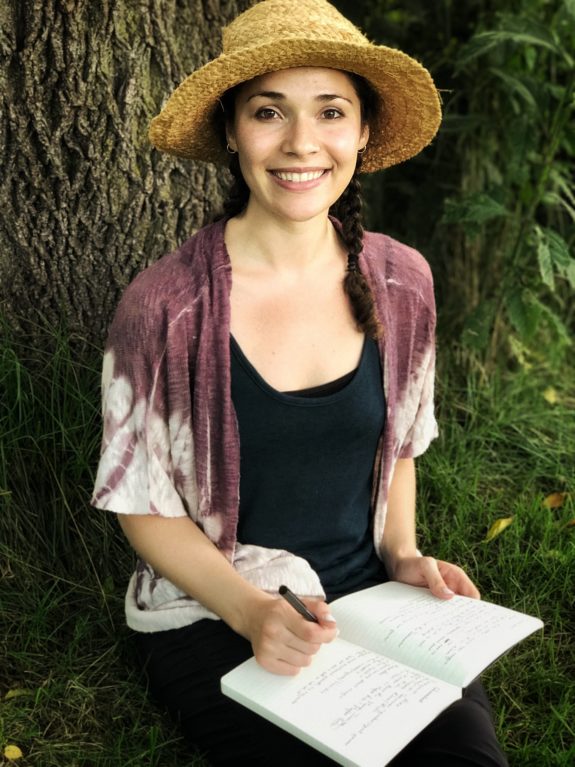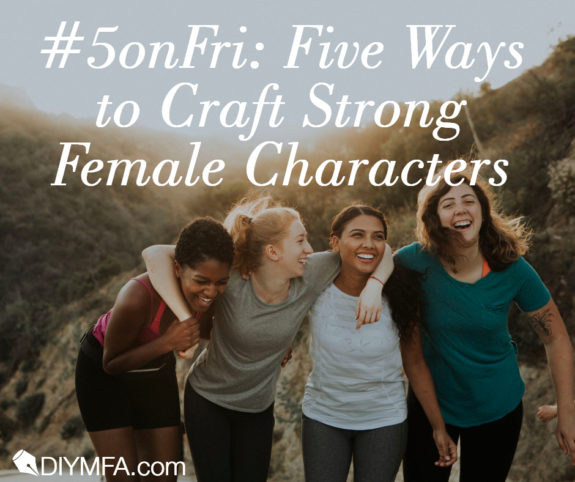Strong female characters have been all the rage the last several years, and it’s been great seeing girls kick some serious behind. But girls don’t have to swing a sword or beat the villain to a pulp with their bare hands in order to be strong. There are many kinds of strength and many kinds of strong girls. As you develop your “strong female character,” here are five types of strength to consider.
1) Mental Strength
There is so much to say about Starr Carter in Angie Thomas’s The Hate U Give, but I’ll limit myself here to her mental strength. Broadly defined, mental strength refers to a person’s ability to deal effectively with pressure. After seeing her best friend shot by police, Starr Carter deals with a truly frightening amount of pressure from all sides as she processes what she saw and decides what to do about it. On top of everything, she has to keep living her life as one of the few black students at a wealthy, predominantly white school—which is not easy at the best of times.
Starr shows enormous strength not only by acting on what she believes in but by maintaining her composure long enough to figure out her beliefs in the first place. There are plenty of people—with intentions both good and bad—urging her to do one thing or another, but Starr ultimately makes her own decisions despite the weight of other people’s desires and expectations.
2) Emotional Strength
Although Ravenclaws are lauded for their intellectual ability, what I always notice and cherish about Luna Lovegood is her emotional strength. Emotionally strong people can identify and express their needs, and they don’t let setbacks or the meanness of others keep them from carrying on with their lives. Now, that doesn’t mean they never let their feelings get hurt. On the contrary, emotionally strong people are willing to feel pain and don’t try to logic away their emotions.
In the movie, when Luna discusses her mother’s death with Harry, she says very simply, “Yes, it was rather horrible. I do feel very sad about it sometimes.” Though the scene appears in the movie, not the book, it’s still very much in keeping with Luna’s character. Luna, like Harry, has known loss, and she is routinely teased and treated rather cruelly by many students. However, she stays true to herself and never loses her empathy or generosity.
3) Moral Strength
Moral strength can be defined as the fortitude to abide by one’s personal values, even when it’s hard. In Tamora Pierce’s Protector of the Small, Keladry of Mindelan, for example, shows great moral strength when she chooses to rescue her maid servant from a cruel prank instead of attending her final trials as a page. She knows missing these trials will mean repeating four miserable, difficult years as the only female page in the palace, but she takes her obligation to those under her care seriously and honors that obligation even at great personal cost to herself.
4) Intellectual Strength
Contrary to popular belief, intelligence is not determined by how much you know. Rather, intelligence is defined as the ability to acquire and apply knowledge and skills. In defining intellectual strength, however, I would argue for an additional component: the ability to think critically but also openly and with humility, as Violet Baudelaire does to such great effect in her various adventures in Lemony Snicket’s A Series of Unfortunate Events. Violet sees possibilities where others see obstacles, and this flexibility of thought is in large part what makes her such an inspired inventor. However, Violet isn’t afraid to acknowledge the gaps in her knowledge and then work hard to fill them.
5) Physical Strength
Physical strength is perhaps the easiest for most to understand. Its definition is fairly straightforward: the measure of a person’s external force on an object using their muscles. In the realms of fiction, though, especially action or adventure based fiction, muscles rarely seem to come into play, and we don’t usually see the sweat and pit stains that go into building physical strength. Such omissions give the impression that physical strength is something you either have or you don’t, rather than something that can be gained through hard work.
One of my favorite things about R.F. Kuang’s The Poppy War is that readers actually see Rin get stronger through diligent exercise (especially as one of her workouts is running up a mountain with a pig on her back) and then reap the fruits of her labor in a truly epic smackdown of her pretty-boy bully nemesis.
These five are by no means the only types of strength out there, and there are many nuances and subtypes of each to be considered. So go forth and think about which types of strength your characters (and you!) have already and which could use a little work. Then work it!

Kassandra Flamouri holds a degree in Music from the Sunderman Conservatory of Gettysburg College, which she uses to moonlight as a folk musician while earning a living as an SAT tutor. She is the author of The Roots Of Our Magic, a Greek-English bilingual collection of short stories inspired by the history, mythology, and folklore of Greece and her work has appeared online and in print in such venues as Flash Fiction Magazine, Timeless Tales Magazine, Fterota Logia, and more. Her own collection of strong girls, The Fruit of our Thorns, is currently available for pre-order on Amazon, due to be released on June 24th. For more information about her upcoming works and pre-order giveaways, visit her at www.flamourifiction.com. Subscribers to her mailing list receive a free story (both text and audio narration) from The Fruit of our Thorns as well as a monthly Pawsitivity email from Skye the rescue pup.







